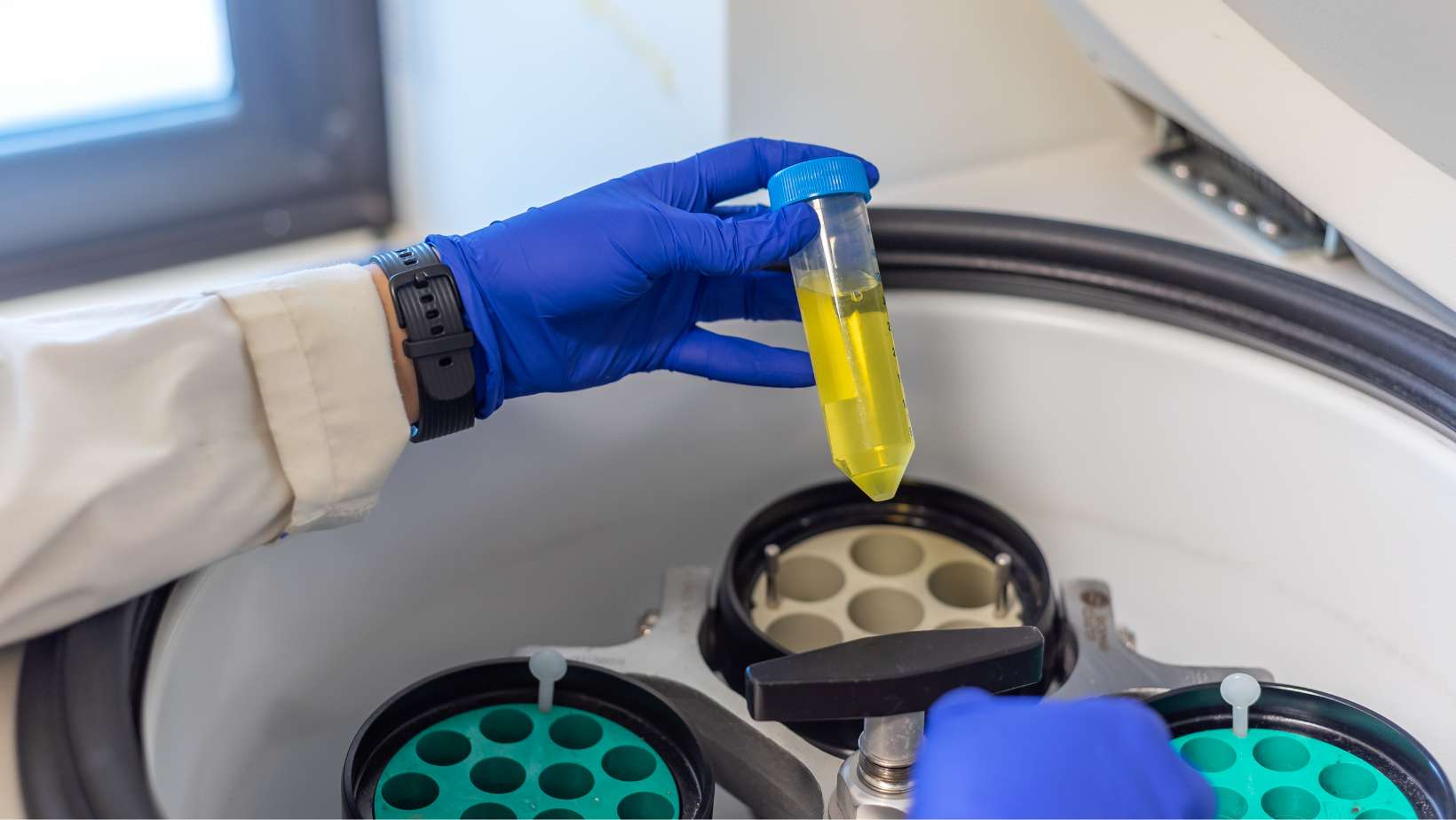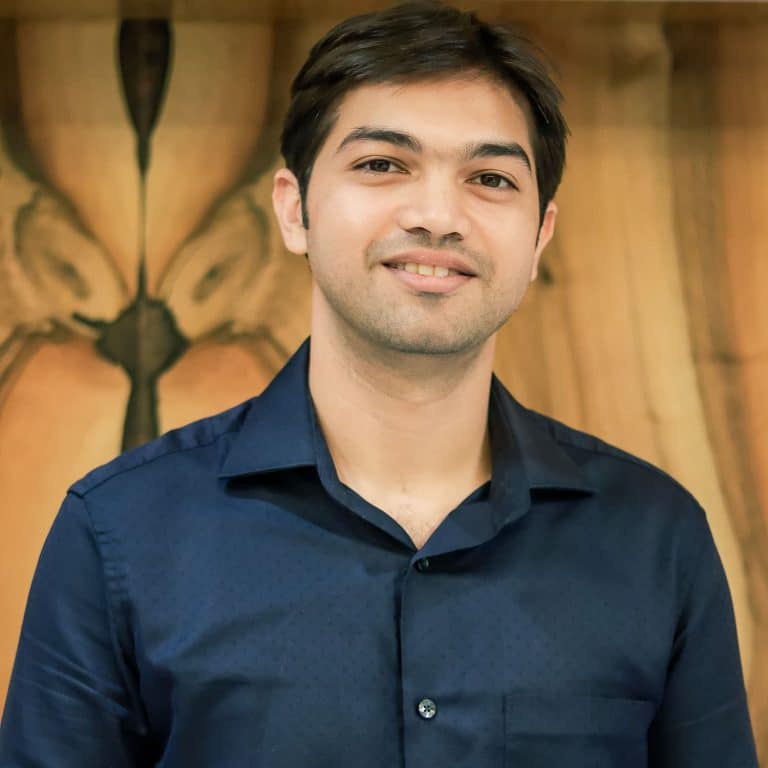Dental procedures often involve drilling, leading to bleeding that slows down healing. But what if there was a way to speed up recovery in the mouth, where bandages can’t reach?
Introducing PRF (Platelet-Rich Fibrin) therapy, a revolutionary treatment used by Dr. Vikram at Pandit Clinic.
In this therapy, blood is drawn from the patient’s arm. The blood is then centrifugued and platelets and Fibrin are separated from it.
The collected platelets and fibrinogen are then injected into the part that needs quick healing. It helps to speed up tissue repair and also helps to clot the blood quickly leading to speedy recovery.
Are you Ready to learn more about this revolutionary treatment Dr. Vikram uses at Pandit Clinic?
Let’s begin and discover more about PRF (Platelet-Rich Fibrin) therapy.
Understanding PRF (Platelet-Rich Fibrin) Therapy For Speedy Dental Surgery Recovery
Remember how superheroes have secret weapons that give them an edge? Well, PRF (Platelet-Rich Fibrin) therapy is kind of like a secret weapon for your mouth after tooth extraction! But instead of gadgets or lasers, PRF (Platelet-Rich Fibrin) therapy harnesses the power of your blood to supercharge your healing. Let’s crack the code on this amazing technology:
What is PRF (Platelet-Rich Fibrin) therapy?
Imagine this: you take a small sample of your blood and spin it like a merry-go-round in a special machine. As it twirls, the different parts of your blood separate, kind of like separating flour, eggs, and sugar when baking a cake. PRF (Platelet-Rich Fibrin) therapy focuses on the “golden yolk” of this separation: a concentrated portion called Platelet-Rich Fibrin (PRF).
Think of PRF as a tiny army of super-healing soldiers:
- Platelets: These are the tiny powerhouses that rush to wounds, plugging leaks and sending out SOS signals for reinforcements. In PRF (Platelet-Rich Fibrin), there are 3-5 times more platelets than in regular blood, meaning they can work extra hard to mend your gums after a tooth extraction.
- Fibrin: This is the netting that holds everything together, forming a protective “band-aid” over the extraction site. PRF (Platelet-Rich Fibrin) is a special kind of fibrin that releases growth factors, like tiny blueprints that tell your cells to rebuild and repair.
- White blood cells: These are the body’s bouncers, keeping out bad guys like bacteria and infection. PRF has extra white blood cells to patrol the area and prevent problems even before they start.
The science behind PRF is pretty cool:
When PRF (Platelet-Rich Fibrin) is placed on the extraction site, it acts like a superhero landing platform. The platelets, fibrin, and white blood cells all work together to:
- Speed up healing: Imagine patching a tire vs. replacing the whole wheel. PRF (Platelet-Rich Fibrin) helps your gums patch up quickly, reducing healing time from weeks to days.
- Reduce pain and swelling: The “band-aid” effect of PRF (Platelet-Rich Fibrin) keeps things calm and comfortable down there, so you can get back to your usual smile faster.
- Fight infection: The extra white blood cells in PRF (Platelet-Rich Fibrin) act like bouncers, kicking out any unwelcome bacteria trying to crash the party at your extraction site.
PRF (Platelet-Rich Fibrin) therapy is like giving your body a boost of its natural healing power, making it a valuable tool for Maxillofacial surgeons like Dr. Vikram Pandit to ensure your recovery after tooth extraction is smooth and speedy.
Dr. Vikram’s Expertise: A Guiding Hand for Your Oral Health
Dr. Vikram Pandit firmly believes in staying at the forefront of his field. He regularly attends conferences and workshops, immersing himself in the latest advancements in oral and maxillofacial surgery.
This dedication to continuous learning ensures that his patients benefit from the most effective and minimally invasive procedures available. He is an early adopter of cutting-edge technologies, utilizing tools like 3D printing and digital scanners to personalize treatment plans and achieve optimal outcomes.
Dr. Pandit’s commitment to progress extends beyond simply acquiring new knowledge; he actively participates in research and development, contributing to the advancement of the field and shaping the future of oral and maxillofacial surgery.
By staying ahead of the curve, Dr. Vikram Pandit ensures that his patients receive the highest quality care possible. He is a trusted resource for patients seeking the latest and most effective treatments, and his dedication to progress is a testament to his commitment to their well-being.
PRF (Platelet-Rich Fibrin) Therapy: Supercharging Your Oral Surgery Recovery
Imagine a superhero sidekick that speeds up healing, reduces pain, and fights infection after your oral surgery. That’s PRF therapy in action! This innovative technique harnesses your own blood’s healing potential, making it a valuable tool in Dr. Vikram Pandit’s toolbox for a wide range of procedures:
How PRF (Platelet-Rich Fibrin) Therapy Boosts Dental Implant Success?
PRF (Platelet-Rich Fibrin) therapy isn’t just for tooth extractions – it can give your dental implants an extra edge, too. By placing PRF around the implant site, we can:
- Enhance bone integration: The growth factors in PRF (Platelet-Rich Fibrin) act like tiny blueprints, telling your bone cells to build strong, supportive tissue around the implant, increasing its long-term success.
- Reduce post-operative swelling and pain: PRF (Platelet-Rich Fibrin) acts like a natural anti-inflammatory, so you can expect a smoother recovery with less discomfort.
- Minimize infection risk: The increased white blood cell count in PRF (Platelet-Rich Fibrin)acts as a security guard, keeping your implant site safe from unwanted invaders.
Conquering the Sinus Lift Challenge:
A sinus lift procedure prepares your jawbone for dental implants by adding bone in areas with insufficient height. PRF v therapy can be your ally here too:
- Faster graft integration: PRF encourages new blood vessel formation, helping the bone graft integrate seamlessly with your existing jawbone.
- Reduced risk of complications: The antimicrobial properties of PRF help prevent infections, lowering the chance of complications after surgery.
Smoothing the Road to Recovery After Tooth Extraction:
PRF therapy offers many benefits such as:
- Speedy healing: No more waiting weeks for your gums to mend! PRF (Platelet-Rich Fibrin) acts like a growth factor factory, accelerating tissue regeneration and getting you back to your usual smile faster.
- Less pain, more gain: The anti-inflammatory effects of PRF significantly reduce post-extraction pain, so you can ditch the painkillers and enjoy a more comfortable recovery.
- Infection? Not on your watch!: The extra white blood cells in PRF act as your personal bouncers, keeping harmful bacteria at bay.
Beyond Extractions: Cyst Removals and Periapical Surgeries:
PRF (Platelet-Rich Fibrin) therapy isn’t limited to just the extraction site. It can also play a vital role in other oral surgery procedures like:
- Cyst removals: After removing a cyst, PRF helps fill the void with healthy tissue, minimizing the risk of recurrence and promoting comfortable healing.
- Periapical surgeries: These procedures treat infections around the root of a tooth. PRF helps manage inflammation, support tissue repair, and improve the overall success of the surgery.
- Dental implant surgery: Faster bone integration and reduced implant failure rates.
By incorporating PRF (Platelet-Rich Fibrin) therapy into his treatment plans, Dr. Vikram Pandit ensures your oral surgery journey is paved with a speedy recovery, minimal discomfort, and optimal results.
Advantages of PRF (Platelet-Rich Fibrin) Therapy in Oral Surgery: Your Speedy Recovery Supercharger
PRF therapy might sound like a sci-fi invention, but it’s a real, cutting-edge technique Dr. Vikram Pandit uses to give your oral surgery recovery a superhero boost. Let’s zoom in on the two key advantages that make PRF therapy such a game-changer:
- Accelerated Healing Process:
Imagine your gums after surgery as a construction site. With regular methods, the repair process is like using hand tools – slow and steady. But with PRF (Platelet-Rich Fibrin) therapy, it’s like deploying a team of high-tech robots! The concentrated platelets and growth factors act like blueprints and construction crews, turbocharging tissue regeneration. This translates to:
- Faster Stitches Removal: Ditch the stitches sooner! PRF (Platelet-Rich Fibrin) promotes faster healing, meaning you can get those pesky stitches out earlier and enjoy a more comfortable mouth.
- Reduced Gum Recession: Worried about receding gums after a tooth extraction? PRF helps preserve gum tissue, minimizing the risk of this unwanted side effect.
- Back to Your Bite, Faster: Craving that juicy apple again? PRF gets you back to enjoying your favourite foods sooner by accelerating the healing of your bite and chewing function.
- Reduced Risk of Complications:
Think of PRF (Platelet-Rich Fibrin) as your own personal army of infection-fighting soldiers. The extra white blood cells in the mixture act like bouncers, keeping harmful bacteria at bay and reducing the risk of post-operative complications like:
- Dry Socket: This painful condition occurs when a blood clot fails to form at the extraction site. PRF’s natural clotting properties significantly lower this risk.
- Swelling and Inflammation: The anti-inflammatory effects of PRF help keep swelling and discomfort to a minimum, making your recovery smoother and more pleasant.
- Infection: Those extra white blood cell soldiers are on high alert, patrolling the surgical site and preventing sneaky bacteria from causing trouble.
PRF therapy is a testament to Dr. Pandit’s commitment to utilizing the latest advancements in oral surgery for his patient’s well-being.
Step-by-step guide on how PRF (Platelet-Rich Fibrin) is used in a dental process:
Before the procedure:
- Blood Draw: A small amount of blood (around 6ml) is drawn from the patient’s arm using a special centrifuge tube that doesn’t contain anticoagulants.
- Centrifugation: The blood tubes are placed in a centrifuge for a specific time and speed (typically 10 minutes at 3000 rpm). This process separates the blood into three layers:
- Top layer: Plasma rich in platelets and leukocytes (PRF)
- Middle layer: Fibrin clot (useful for some applications)
- Bottom layer: Red blood cells
- PRF isolation: The dentist carefully extracts the top layer, the PRF concentrate, using sterile instruments.
During the procedure:
- Tooth extraction: The dentist performs the tooth extraction using standard techniques.
- PRF placement: The extracted PRF is placed directly into the extraction socket or applied to the surrounding gum tissue.
- Membrane formation (optional): Sometimes, the PRF is further processed into a membrane for additional coverage and support.
After the procedure:
- Sutures (optional): Depending on the specific case, the dentist may or may not place sutures after PRF application.
- Recovery: The patient receives post-operative instructions to ensure proper care and hygiene.
PRF(Platelet-Rich Fibrin) Therapy in Oral Surgery: Your Questions Answered
PRF (Platelet-Rich Fibrin) therapy might sound like a medical mystery, but it’s a powerful tool Dr. Vikram Pandit uses to supercharge your oral surgery recovery. To clear the air and answer those lingering questions, let’s dive into some FAQs:
- Are there any precautions or considerations before PRF therapy?
While PRF is generally safe, some things to keep in mind:
- Certain medications: Tell Dr. Pandit about any medications you’re taking, as some might affect platelet function.
- Smoking: Tobacco can hinder healing, so quitting before and after surgery is highly recommended.
- Medical conditions: Certain medical conditions, like uncontrolled diabetes or blood clotting disorders, might require additional evaluation before using PRF.
- Does PRF hurt?
Not at all! PRF therapy itself is pain-free. You might feel a slight pinch during the blood draw, but that’s about it.
- How long does the PRF effect last?
The healing boost from PRF typically lasts several weeks, promoting tissue regeneration and reducing inflammation during that crucial recovery period.
- Will I have a scar?
Scars after oral surgery are rare, and using PRF can minimize their appearance. It promotes optimal tissue healing, leading to smoother and less noticeable scar formation.
- Can I use PRF for other procedures?
Absolutely! Dr. Pandit uses PRF therapy in various oral surgery procedures, including dental implant placement, sinus lift surgery, cyst removal, and more. Its versatility and healing power make it a valuable tool across the surgical spectrum.
Consult Dr. Pandit to discuss your specific concerns and suitability for PRF therapy. He will personalize your treatment plan to ensure optimal results and a smooth recovery.
Conclusion:
Supercharge Your Recovery with Dr. Vikram Pandit and PRF Therapy
Oral surgery doesn’t have to be a marathon of discomfort and slow healing. With Dr. Vikram Pandit and his expertise in cutting-edge techniques like PRF therapy, you can experience a sprint to recovery. Imagine: minimal downtime, reduced pain, and a smile back on your face faster than ever imagined.
PRF therapy harnesses the power of your blood, transforming it into a potent cocktail of growth factors and natural defences. It accelerates tissue repair, fights off infections, and minimizes complications, making it a superhero for various oral surgeries, from tooth extractions and dental implants to cyst removals and more.
Dr. Vikram Pandit, a leading figure in oral and maxillofacial surgery, embraces the power of PRF to ensure his patients receive the most optimal outcomes and a smooth, speedy journey back to oral health. Don’t settle for anything less than the best. Choose Dr. Vikram Pandit and PRF therapy to redefine your expectations and conquer your oral surgery with confidence.
Meet the Doctor
BDS, MDS Oral & Maxillofacial Surgeon
Dr. Vikram is a visiting consultant and consultant oral and maxillofacial surgeon at the top hospitals in Pune like Poona Hospital and Research Centre, Ratna Memorial Hospital, Pandit Clinic and KEM Hospital. Dr. Vikram has done clinical fellowship in craniofacial surgery with focus on surgery for cleft lip and palate deformities, orthognathic surgery and surgery for sleep related disordered breathing (SRDB). He has trained for advanced management for Facial Trauma, from Taiwan. He has also attended various seminars and done workshops related to Oral and Maxillofacial Surgery. Dr. Vikram is also a co- author of a chapter for a textbook. He has been invited as a speaker for number of conferences in India as well as Internationally.
You Might Be Interested In

What To Consider For Laser Hair Reduction
Laser hair reduction has become a popular choice for those seeking a long-term and permanent hair removal solution for unwanted hair. As a dermatologist, I

Yellow Peel: A Revolutionary Solution for Clearer, Younger-Looking Skin.
The Yellow Peel is a powerful treatment that rejuvenates skin, reduces imperfections, and restores a youthful glow. With retinoic acid, it targets fine lines, pigmentation, and uneven texture, delivering a smoother, radiant complexion. Discover the benefits of clearer, younger-looking skin!









